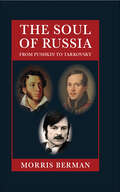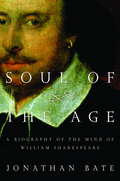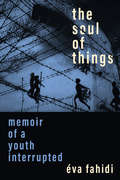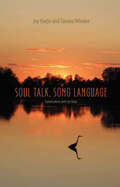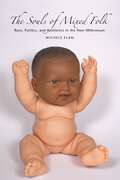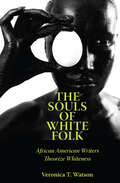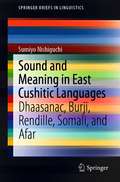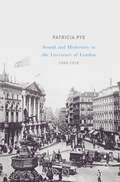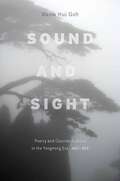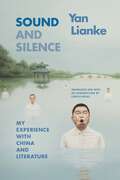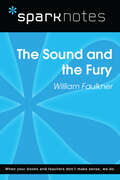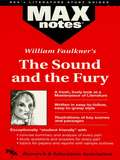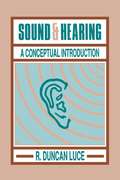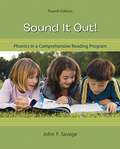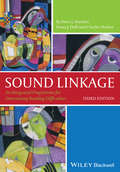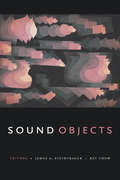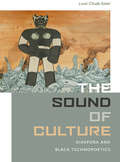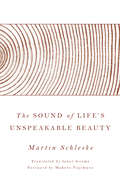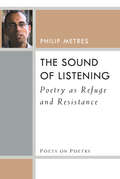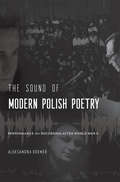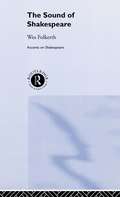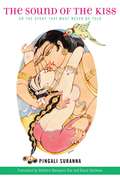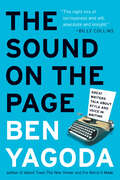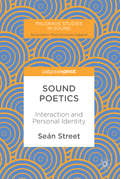- Table View
- List View
The Soul of Russia: From Pushkin to Tarkovsky
by Morris Berman"Ecstasy, witchcraft, bewilderment-these ten loving vignettes on scandalous corners of Russian culture, by one of our most seasoned cultural critics, are a tribute to imperishable art even in our catastrophic time." -Caryl Emerson, Professor Emerita of Slavic Languages and Literatures, Princeton University In terms of literature, music, and film, it would be hard to outdo the sheer genius and creativity of Russia. These things constitute the soul of the nation, and it is this that Morris Berman explores in his latest work, The Soul of Russia. His central argument is that at the heart of this brilliance lies a particular idiosyncratic theme: the peasant-shamanic-folkloric tradition of the Russian people, which these artists, from Pushkin to Tarkovsky, drew upon for their inspiration. It was a "Dionysian" source, a nonrational one, and it endowed Russian creative work with what we would have to call vibrancy. Berman presents ten Russian artists who have left their indelible imprint on our collective consciousness. Pushkin offers a supernatural puzzle that Russian scholars are still trying to solve to this day. Gogol tells a tale of a man who wakes up to discover he has lost his nose, and goes in search of it-while his nose has simultaneously taken on a life of its own. Andrei Bely, in Petersburg, explains the revolution of 1905 not through traditional sociological or historical analysis, but by means of a surreal panorama of Oedipal events. Chekhov wittily explores the erotic properties of food, while Diaghilev shocks Europe with the great Vaslav Nijinsky and the Ballets Russes. Composing for this radical dance company, Stravinsky manages to alter the face of music forever. Mikhail Bulgakov offers one of the greatest novels of the twentieth century, The Master and Margarita, and Tarkovsky responds to Stanley Kubrick's famous 2001: A Space Odyssey by coming up with Solaris, a film based not on superficial American techno-fetishism but on questions of love, reality, and human identity. The Soul of Russia is a feast for the mind, but also for the senses-a book that readers will want to delve into more than once.
Soul of the Age
by Jonathan Bate"Soul of the Age" is the most artful, intriguing, and satisfying study of the mind of William Shakespeare we now possess . . . A major achievement from a master of Shakespeare studies--David Armitage, professor of history, Harvard University.
The Soul of Things: Memoir of a Youth Interrupted
by Éva FahidiAn exceptional document of an extraordinary life, The Soul of Things is the memoir of Holocaust survivor Éva Fahidi. Since the memoir was first published in Hungarian in 2004 under the title Anima Rerum, Fahidi has become a household name in Hungary and in Germany. Featured in countless interviews and several prize-winning documentary films, at the age of ninety-five she is a frequent speaker at Holocaust commemorations in Hungary, Germany, and elsewhere. The Soul of Things combines a rare depiction of upper-middle-class Jewish life in pre-war Hungary with the chronicle of a woman’s deportation and survival in the camps. Fahidi is a gifted writer with a unique voice, full of wisdom, humanity, and flashes of dark humour. With an unsentimental, philosophical perspective, she recounts her journey from the Great Hungarian Plain to the extermination camp of Auschwitz-Birkenau, the forced labour camp of Münchmühle, and back. The English edition includes a new introduction by historians Éva Kovács and Judith Szapor, the original prefaces to the Hungarian and German editions, an essay on the Münchmüle Camp by Fritz Brinkman-Frisch, and extensive notes providing historical and cultural context for Fahidi’s narrative.
Soul Talk, Song Language: Conversations with Joy Harjo
by Joy Harjo Tanaya Winder Laura ColtelliIntimate and illuminating conversations with one of America's foremost Native artists Joy Harjo is a "poet-healer-philosopher-saxophonist," and one of the most powerful Native American voices of her generation. She has spent the past two decades exploring her place in poetry, music, dance/performance, and art. Soul Talk, Song Language gathers together in one complete collection many of these explorations and conversations. Through an eclectic assortment of media, including personal essays, interviews, and newspaper columns, Harjo reflects upon the nuances and development of her art, the importance of her origins, and the arduous reconstructions of the tribal past, as well as the dramatic confrontation between Native American and Anglo civilizations. Harjo takes us on a journey into her identity as a woman and an artist, poised between poetry and music, encompassing tribal heritage and reassessments and comparisons with the American cultural patrimony. She presents herself in an exquisitely literary context that is rooted in ritual and ceremony and veers over the edge where language becomes music.
The Souls of Mixed Folk: Race, Politics, and Aesthetics in the New Millennium
by Michele ElamThe Souls of Mixed Folk examines representations of mixed race in literature and the arts that redefine new millennial aesthetics and politics. Focusing on black-white mixes, Elam analyzes expressive works--novels, drama, graphic narrative, late-night television, art installations--as artistic rejoinders to the perception that post-Civil Rights politics are bereft and post-Black art is apolitical. Reorienting attention to the cultural invention of mixed race from the social sciences to the humanities, Elam considers the creative work of Lezley Saar, Aaron McGruder, Nate Creekmore, Danzy Senna, Colson Whitehead, Emily Raboteau, Carl Hancock Rux, and Dave Chappelle. All these writers and artists address mixed race as both an aesthetic challenge and a social concern, and together, they gesture toward a poetics of social justice for the "mulatto millennium." The Souls of Mixed Folk seeks a middle way between competing hagiographic and apocalyptic impulses in mixed race scholarship, between those who proselytize mixed race as the great hallelujah to the "race problem" and those who can only hear the alarmist bells of civil rights destruction. Both approaches can obscure some of the more critically astute engagements with new millennial iterations of mixed race by the multi-generic cohort of contemporary writers, artists, and performers discussed in this book. The Souls of Mixed Folkoffers case studies of their creative work in an effort to expand the contemporary idiom about mixed race in the so-called post-race moment, asking how might new millennial expressive forms suggest an aesthetics of mixed race? And how might such an aesthetics productively reimagine the relations between race, art, and social equity in the twenty-first century?
The Souls of White Folk: African American Writers Theorize Whiteness (Margaret Walker Alexander Series in African American Studies)
by Veronica T. WatsonThe Souls of White Folk: African American Writers Theorize Whiteness is the first study to consider the substantial body of African American writing that critiques whiteness as social construction and racial identity. Arguing against the prevailing approach to these texts that says African American writers retreated from issues of “race” when they wrote about whiteness, Veronica T. Watson instead identifies this body of literature as an African American intellectual and literary tradition that she names “the literature of white estrangement.” In chapters that theorize white double consciousness (W. E. B. Du Bois and Charles W. Chesnutt), white womanhood and class identity (Zora Neale Hurston and Frank Yerby), and the socio-spatial subjectivity of southern whites during the civil rights era (Melba Patillo Beals), Watson explores the historically situated theories and analyses of whiteness provided by the literature of white estrangement from the late-nineteenth through the mid-twentieth centuries. She argues that these texts are best understood as part of a multipronged approach by African American writers to challenge and dismantle white supremacy in the United States and demonstrates that these texts have an important place in the growing field of critical whiteness studies.
Sound and Meaning in East Cushitic Languages: Dhaasanac, Burji, Rendille, Somali, and Afar (SpringerBriefs in Linguistics)
by Sumiyo NishiguchiThis book, one of the few English language publications on indigenous languages spoken in East Africa, highlights theoretical contributions on understudied East Cushitic languages, based on extensive data. It introduces readers to important fields such as the OT phonology and morphology of Dhaasanac and discusses the syntax of negation, semantics of focus, negation and context shift. It then examines negative polarity items and context sensitivity in the Rendille, Burji, Somali and Afar languages to offer broader insights into these phenomena. Given its focus, the book will appeal to researchers and students who are interested in formal semantics, pragmatics and indigenous studies around the globe, especially those wanting to learn about East Cushitic linguistics.
Sound and Modernity in the Literature of London, 1880-1918
by Patricia PyeThis book explores the literary representation of late Victorian and early Edwardian London from an auditory perspective, arguing that readers should 'listen' to impressions of the city, as described by writers such as Conrad, Doyle, Ford and Gissing. It was in this period that London began to 'sound modern' and, through a closer hearing of its literature, writers' wider responses to modernity are revealed. The book is structured into familiar modernist themes, revisiting time and space, social progress and popular culture through an exploration of the sound impressions of some key works. Each chapter is contextualized by these themes, revealing how the sound of the news, social protest, music hall and suburbanization impacted on writers' literary imaginations. Suitable for students of modernist literature and specialists in sound studies, this book will also appeal to readers with a wider interest in London's history and popular culture between 1880-1918.
Sound and Sight: Poetry and Courtier Culture in the Yongming Era (483-493)
by Meow GohThis is the first book to examine Chinese poetry and courtier culture using the concept of shengse—sound and sight—which connotes "sensual pleasure." Under the moral and political imperative to avoid or even eliminate representations of sense perception, premodern Chinese commentators treated overt displays of artistry with great suspicion, and their influence is still alive in modern and contemporary constructions of literary and cultural history. The Yongming poets, who openly extolled "sound and rhymes," have been deemed the main instigators of a poetic trend toward the sensual. Situating them within the court milieu of their day, Meow Hui Goh asks a simple question: What did shengse mean to the Yongming poets? By unraveling the aural and visual experiences encapsulated in their poems, she argues that their pursuit of "sound and sight" reveals a complex confluence of Buddhist influence, Confucian value, and new sociopolitical conditions. Her study challenges the old perception of the Yongming poets and the common practice of reading classical Chinese poems for semantic meaning only.
Sound and Silence: My Experience with China and Literature (Sinotheory)
by Lianke YanYan Lianke is a world-renowned author of novels, short stories, and essays whose provocative and nuanced writing explores the reality of everyday life in contemporary China. In Sound and Silence, Yan compares his literary project to a blind man carrying a flashlight whose role is to help others perceive the darkness that surrounds them. Often described as China’s most censored author, Yan reflects candidly on literary censorship in contemporary China. He outlines the Chinese state’s project of national amnesia that suppresses memories of past crises and social traumas. Although being banned in China is often a selling point in foreign markets, Yan argues that there is no requisite correlation between censorship and literary quality. Among other topics, Yan also examines the impact of American literature on Chinese literature in the 1980s and 1990s. Encapsulating his perspectives on life, writing, and literary history, Sound and Silence includes an introduction by translator Carlos Rojas and an afterword by Yan.
The Sound and the Fury (SparkNotes Literature Guide Series)
by SparkNotesThe Sound and the Fury (SparkNotes Literature Guide) by William Faulkner Making the reading experience fun! Created by Harvard students for students everywhere, SparkNotes is a new breed of study guide: smarter, better, faster. Geared to what today's students need to know, SparkNotes provides: *Chapter-by-chapter analysis *Explanations of key themes, motifs, and symbols *A review quiz and essay topicsLively and accessible, these guides are perfect for late-night studying and writing papers
The Sound and the Fury (MAXNotes Literature Guides)
by Boria SaxREA's MAXnotes for William Faulkner's The Sound and the Fury MAXnotes offer a fresh look at masterpieces of literature, presented in a lively and interesting fashion. Written by literary experts who currently teach the subject, MAXnotes will enhance your understanding and enjoyment of the work. MAXnotes are designed to stimulate independent thought about the literary work by raising various issues and thought-provoking ideas and questions. MAXnotes cover the essentials of what one should know about each work, including an overall summary, character lists, an explanation and discussion of the plot, the work's historical context, illustrations to convey the mood of the work, and a biography of the author. Each section of the work is individually summarized and analyzed, and has study questions and answers.
Sound & Hearing: A Conceptual Introduction
by R. Duncan LuceThe major aim of this book is to introduce the ways in which scientists approach and think about a phenomenon -- hearing -- that intersects three quite different disciplines: the physics of sound sources and the propagation of sound through air and other materials, the anatomy and physiology of the transformation of the physical sound into neural activity in the brain, and the psychology of the perception we call hearing. Physics, biology, and psychology each play a role in understanding how and what we hear. The text evolved over the past decade in an attempt to convey something about scientific thinking, as evidenced in the domain of sounds and their perception, to students whose primary focus is not science. It does so using a minimum of mathematics (high school functions such as linear, logarithmic, sine, and power) without compromising scientific integrity. A significant enrichment is the availability of a compact disc (CD) containing over 20 examples of acoustic demonstrations referred to in the book. These demonstrations, which range from echo effects and filtered noise to categorical speech perception and total more than 45 minutes, are invaluable resources for making the text come alive.
Sound it Out!: Phonics in a Comprehensive Reading Program (Fourth Edition)
by John F. SavageThis book covers both the content of phonics and the ways in which it can be effectively integrated into a comprehensive classroom reading program. The text contains practical teaching suggestions for phonemic awareness, phonics, and spelling. The fourth edition features an increased emphasis on technology as it applies to phonics instruction, along with additional focus placed on helping children who have trouble learning acquire basic phonics skills.
Sound Linkage: An Integrated Programme for Overcoming Reading Difficulties
by Peter J. Hatcher Fiona J. Duff Charles HulmeThe updated edition of this successful resource has been developed to support children with reading delays and dyslexia. It contains a phonological training programme, an explanation of how this programme can be embedded within a broader reading intervention, a standardized test of phonological awareness and a methodology to grade children’s reading books. This third edition has been revised throughout to include the latest developments in the field These resources have been used with a wide range of children and found to be suitable for use with any reading-delayed children, irrespective of cognitive ability and age All activities are accompanied by a set of photocopiable record sheets, a set of pictures, and an appendix of additional activities useful in helping children master a particular skill or to reinforce existing learning The ten sections of activities within the guide include: identification of words and syllables; identification and supply of rhyming words; identification and discrimination of phonemes; and blending, segmentation, deletion, substitution and transposition of phonemes within words.
Sound Objects
by James A. Steintrager Rey ChowIs a sound an object, an experience, an event, or a relation? What exactly does the emerging discipline of sound studies study? Sound Objects pursues these questions while exploring how history, culture, and mediation entwine with sound’s elusive objectivity. Examining the genealogy and evolution of the concept of the sound object, the commodification of sound, acousmatic listening, nonhuman sounds, and sound and memory, the contributors not only probe conceptual issues that lie in the forefront of contemporary sonic discussions but also underscore auditory experience as fundamental to sound as a critical enterprise. In so doing, they offer exciting considerations of sound within and beyond its role in meaning, communication, and information and an illuminatingly original theoretical overview of the field of sound studies itself. Contributors. Georgina Born, Michael Bull, Michel Chion, Rey Chow, John Dack, Veit Erlmann, Brian Kane, Jairo Moreno, John Mowitt, Pooja Rangan, Gavin Steingo, James A. Steintrager, Jonathan Sterne, David Toop
The Sound of Culture: Diaspora and Black Technopoetics
by Louis Chude-SokeiThe Sound of Culture explores the histories of race and technology in a world made by slavery, colonialism, and industrialization. Beginning in the late nineteenth century and moving through to the twenty-first, the book argues for the dependent nature of those histories. Looking at American, British, and Caribbean literature, it distills a diverse range of subject matter: minstrelsy, Victorian science fiction, cybertheory, and artificial intelligence. All of these facets, according to Louis Chude-Sokei, are part of a history in which music has been central to the equation that links blacks and machines. As Chude-Sokei shows, science fiction itself has roots in racial anxieties and he traces those anxieties across two centuries and a range of writers and thinkers—from Samuel Butler, Herman Melville, and Edgar Rice Burroughs to Sigmund Freud, William Gibson, and Donna Haraway, to Norbert Weiner, Sylvia Wynter, and Samuel R. Delany.
The Sound of Life's Unspeakable Beauty
by Martin Schleske&“In the final analysis, music is prayer cast into sound.&” One of the greatest luthiers of our time reveals the secrets of his profession—and how each phase of handcrafting a violin can point us toward our calling, our true selves, and the overwhelming power and gentleness of God&’s love. Schleske explains that our world is flooded with metaphors, parables, and messages from God. But are we truly listening? Do we really see? Drawing upon Scripture, his life experiences, and his insights as a master violinmaker, Schleske challenges readers to understand the world, ourselves, and the Creator in fresh ways. The message of this unique book is mirrored in sensitive photographs by Donata Wenders, whose work has appeared in prominent newspapers and magazines, including The New York Times, Rolling Stone, and Esquire, as well as museums and galleries throughout the world.
The Sound of Life's Unspeakable Beauty
by Martin SchleskeChristianity Today Book Award in Culture and the Arts (2021) &“In the final analysis, music is prayer cast into sound.&” One of the greatest luthiers of our time reveals the secrets of his profession—and how each phase of handcrafting a violin can point us toward our calling, our true selves, and the overwhelming power and gentleness of God&’s love. Schleske explains that our world is flooded with metaphors, parables, and messages from God. But are we truly listening? Do we really see? Drawing upon Scripture, his life experiences, and his insights as a master violinmaker, Schleske challenges readers to understand the world, ourselves, and the Creator in fresh ways. The message of this unique book is mirrored in sensitive photographs by Donata Wenders, whose work has appeared in prominent newspapers and magazines, including The New York Times, Rolling Stone, and Esquire, as well as museums and galleries throughout the world.
The Sound of Listening: Poetry as Refuge and Resistance (Poets On Poetry)
by Philip MetresPhilip Metres stakes a claim for the cultural work that poems can perform—from providing refuge to embodying resistance, from recovering silenced voices to building a more just world, in communities of solitude and solidarity. Gathering a decade of his writing on poetry, he widens our sense of poetry as a way of being in the world, proposing that poems can offer a permeability to marginalized voices and a shelter from the imperial noise and despair that can silence us. The Sound of Listening ranges between expansive surveys of the poetry of 9/11, Arab American poetry, documentary poetry, landscape poetry, installation poetry, and peace poetry; personal explorations of poets such as Adrienne Rich, Khalil Gibran, Lev Rubinstein, and Arseny Tarkovsky; and intimate dialogues with Randa Jarrar, Fady Joudah, and Micah Cavaleri, that illuminate Metres’s practice of listening in his 2015 work, Sand Opera.
The Sound of Modern Polish Poetry: Performance and Recording after World War II
by Aleksandra KremerAn illuminating new study of modern Polish verse in performance, offering a major reassessment of the roles of poets and poetry in twentieth-century Polish culture. What’s in a voice? Why record oneself reading a poem that also exists on paper? In recent decades, scholars have sought to answer these questions, giving due credit to the art of poetry performance in the anglophone world. Now Aleksandra Kremer trains a sharp ear on modern Polish poetry, assessing the rising importance of authorial sound recordings during the tumultuous twentieth century in Eastern Europe. Kremer traces the adoption by key Polish poets of performance practices intimately tied to new media. In Polish hands, tape recording became something different from what it had been in the West, shaped by its distinctive origins behind the Iron Curtain. The Sound of Modern Polish Poetry reconstructs the historical conditions, audio technologies, and personal motivations that informed poetic performances by such luminaries as Czesław Miłosz, Wisława Szymborska, Aleksander Wat, Zbigniew Herbert, Miron Białoszewski, Anna Swir, and Tadeusz Różewicz. Through performances both public and private, prepared and improvised, professional and amateur, these poets tested the possibilities of the physical voice and introduced new poetic practices, reading styles, and genres to the Polish literary scene. Recording became, for these artists, a means of announcing their ambiguous place between worlds. Kremer’s is a work of criticism as well as recovery, deploying speech-analysis software to shed light on forgotten audio experiments—from poetic “sound postcards,” to unusual home performances, to the final testaments of writer-performers. Collectively, their voices reveal new aesthetics of poetry reading and novel concepts of the poetic self.
The Sound of Shakespeare (Accents on Shakespeare)
by Wes FolkerthThe 'Sound of Shakespeare' reveals the surprising extent to which Shakespeare's art is informed by the various attitudes, beliefs, practices and discourses that pertained to sound and hearing in his culture. In this engaging study, Wes Folkerth develops listening as a critical practice, attending to the ways in which Shakespeare's plays express their author's awareness of early modern associations between sound and particular forms of ethical and aesthetic experience. Through readings of the acoustic representation of deep subjectivity in Richard III, of the 'public ear' in Antony and Cleopatra, the receptive ear in Coriolanus, the grotesque ear in A Midsummer Night's Dream, the 'greedy ear' in Othello, and the 'willing ear' in Measure for Measure, Folkerth demonstrates that by listening to Shakespeare himself listening, we derive a fuller understanding of why his works continue to resonate so strongly with is today.
The Sound of the Kiss, or The Story That Must Never Be Told (Translations from the Asian Classics)
by Pingali SurannaComposed in the mid-sixteenth century, The Sound of the Kiss, or The Story That Must Never Be Told, could be considered the first novel written in South Asia. Telugu, the language spoken in today's Andhra Pradesh region of southern India, has a classical literary tradition extending over a thousand years. Suranna's masterpiece comes from a period of intense creativity in Telugu, when great poets produced strikingly modern innovations. The novel explodes preconceived ideas about early South Indian literature: for example, that the characters lack interiority, that the language is formulaic, and that Telugu texts are mere translations of earlier Sanskrit works. Employing the poetic style known as campu, which mixes verse and prose, Pingali Suranna's work transcends our notions of traditional narrative. "I wanted to have the structure of a complex narrative no one had ever known," he said of his great novel, "with rich evocations of erotic love, and also descriptions of gods and temples that would be a joy to listen to."The Sound of the Kiss is both a gripping love story and a profound meditation on mind and language. Shulman and Rao include a thorough introduction that provides a broader understanding of, and appreciation for, the complexities and subtleties of this text.
The Sound on the Page: Great Writers Talk about Style and Voice in Writing
by Ben YagodaThe acclaimed author examines the importance of a writer&’s voice—including interviews with Susan Orlean, Michel Chabon, Junot Díaz and others. In writing, style matters. Our favorite writers often entertain, move, and inspire us less by what they say than by how they say it. In The Sound on the Page, acclaimed author, teacher, and critic Ben Yagoda offers practical and incisive help for writers on developing and discovering their own style and voice. This wonderfully rich and readable book features interviews with more than 40 of our most important authors discussing their literary style, including: Dave Barry Harold Bloom Supreme Court Justice Stephen Breyer Bill Bryson Michael Chabon Andrei Codrescu Junot Díaz Adam Gopnik Jamaica Kincaid Michael Kinsley Elmore Leonard Elizabeth McCracken Susan Orlean Cynthia Ozick Anna Quindlen Jonathan Raban David Thomson Tobias Wolff
Sound Poetics
by Seán StreetThis book examines sonic signals as something both heard internally and externally, through imagination, memory and direct response. In doing so it explores how the mind 'makes' sound through experience, as it interprets codes on the written page, and creates an internal leitmotif that then interacts with new sounds made through an aural partnership with the external world, chosen and involuntary exposure to music and sound messages, both friendly and antagonistic to the identity of the self. It creates an argument for sound as an underlying force that links us to the world we inhabit, an essential part of being in the same primal sense as the calls of birds and other inhabitants of a shared earth. Street argues that sound as a poetic force is part of who we are, linked to our visualisation and sense of the world, as idea and presence within us. This incredibly interdisciplinary book will be of great interest to scholars of radio, sound, media and literature as well as philosophy and psychology.
